Once again to the question of the lever on the Mannlicher M1896 pistol.
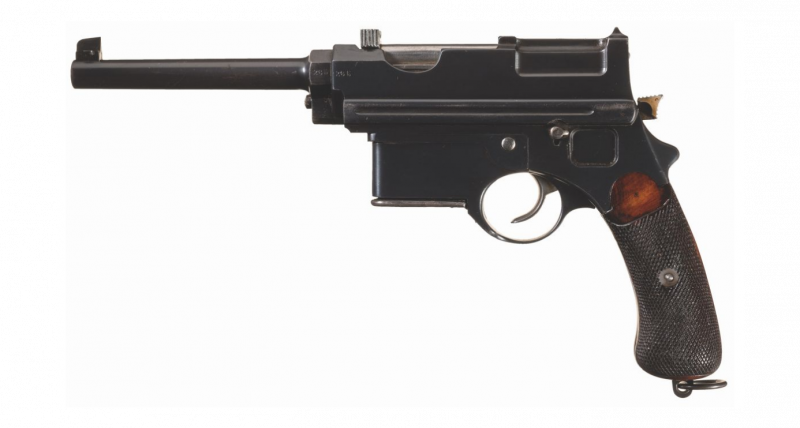
This is what Mannlicher’s “Austrian Mauser” is like. And indeed it is similar. Left view. Photo by Rock Island Auction Company
Old English saying
stories about weapons. Quite recently, our website published a material dedicated to Austrian automatic pistols, and it mentioned a pistol of the 1896 model that turned out to be unsuccessful and did not gain popularity, which many called the “Austrian Mauser” for its characteristic shape. And there was one detail in it, namely the lever on the right, which caused lively debate in the comments to this article, which in the end was never fully resolved, to everyone’s satisfaction.
However, before moving on to resolving them, one cannot help but remember how people generally find out about something. Someone, without reading a single book, learns everything from his practical work and sooner or later begins to understand it perfectly. Some people read first, and then check and deepen what they read with practice. Well, for a number of reasons, some are forced to be content with only what they read in books. And here the question arises about the competence of their authors. And if they are considered by everyone to be so, then... why not believe what they wrote. Of course, anyone can make a mistake, but when, say, a person who has used primary sources writes about a subject, then the likelihood of errors is reduced to zero.
But here another problem arises: the language barrier. Someone speaks fluent English or French, but the special terminology is unknown to him. And someone doesn’t know how to ask a merchant for change, but can easily read a lecture on, say, the same armor and weapons of the Middle Ages in English. (Although I personally know about change - V.O.). But it’s not always possible to get good books “from there.” 40-50 dollars for a book plus shipping is not enough money to cover the salary of an assistant professor at a regional Russian university, and it is not always posted on the Internet. Well, as for the Internet, this is a double-edged sword - everything is true and everything is fiction there at the same time, and you need to distinguish one from the other... by reading books, but you don’t have the necessary books at hand. A vicious circle arises from which it is difficult to get out. And if a person also works, has a family and children, then he has no time to do all this. And he uses what is closest to him. In particular, these are materials from the VO website.
It is also clear that we, its authors, are also hostages of the source base. For example, at the request of the publisher, I, for example, can come to Moscow and, having gained access to the weapons storage room of the Museum of the Russian Army, shoot there whatever my heart desires. But for a fee, of course, from 2 to 6 thousand rubles per sample. And what publisher today would pay a lot of money for a large number of such photographs? And there are weapons museums at military schools. But... taking photographs there, as I was warned in one of them, is only possible with a camera registered there. And the same goes for mobile phones. So, only those who work there can take advantage of everything that is there, and most often they cannot (they simply do not know how to write popularly - V.O.) or do not want to, because they already have enough of everything. And this again narrows our information space in which we, the authors of VO, work for our readers.
And if, for example, the Belgian arms collector Alain Daubresse and the American company Rock Island Auctions had not given me permission to use their photographic materials, then what a huge number of interesting materials we would all have lost, right? And the same applies to the notorious “Mannlicher” of 1896...
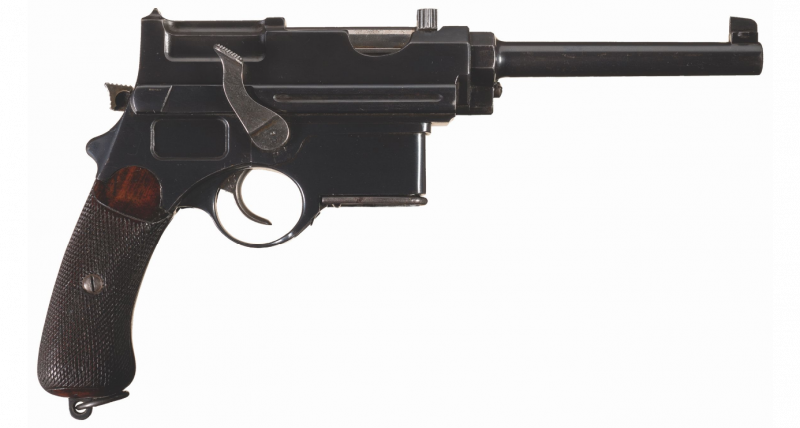
"Mannlicher" M1896. Right view. This ill-fated lever is very clearly visible, which is really extremely difficult to use with the right hand. Photo by Rock Island Auction Company
But, fortunately, one of the VO readers managed to send me one very interesting book, published abroad immediately after the end of World War II. Here is the preface to it...
(“Mannlicher rifles and pistols” Original Drawings by Von Kromar. From the Steyr Armory. Famous Sporting and Military Weapons. Walter HB Smith).
The book is really very complete, detailed and interesting, and most importantly, it is written in good literary English, which can be read and translated into Russian without much difficulty. So today we will get acquainted with the technical characteristics of the M1896 based on translations from this book, which everyone can repeat from the pages given here on their own.
So…
This interesting pistol design is often erroneously referred to as the "Manlicher Model 1903" as this is the year it was introduced to the European gun market. Many authors of books on weapons subsequently wrote that Mannlicher borrowed a lot from the Mauser pistol of 1896. But it is clear that Mannlicher did not copy his German competitor. His model used a special cartridge, but when the pistol was mass-produced in 1903, it was adapted to a modified form of the 7,63 mm Mauser cartridge with a lightweight charge. The locking system used is not as reliable as the Mauser and is not designed for heavy loads. Although later models of this pistol use the 7,63 mm Mauser cartridge, owners are advised not to use it with a full powder load due to the risk of damaging the rear of the receiver, which usually occurs due to the heavy recoil of the bolt. This is a “short recoil” weapon in which the bolt is completely locked at the moment of firing. The barrel and bolt are firmly locked at the moment of firing and there is strong pressure on the bolt. Then they move backwards, the barrel reaches a stop, and its backward movement stops. The bolt disengages from the barrel and moves only back to extract and eject the spent cartridge case. The box magazine, located in front of the trigger guard, is loaded through the top of the bolt from an insert clip. Although the Mannlicher resembles the Mauser in some general respects, its mechanics are radically different. In particular, the barrel is screwed into the receiver, which houses the bolt. A separate unit in this pistol is also the magazine housing, which also houses the trigger guard. The very light bolt has a ridge at the top that allows it to be pulled back for cocking. The original model's magazine holds 7 rounds. (Some variants of the later commercial model had detachable magazines.)
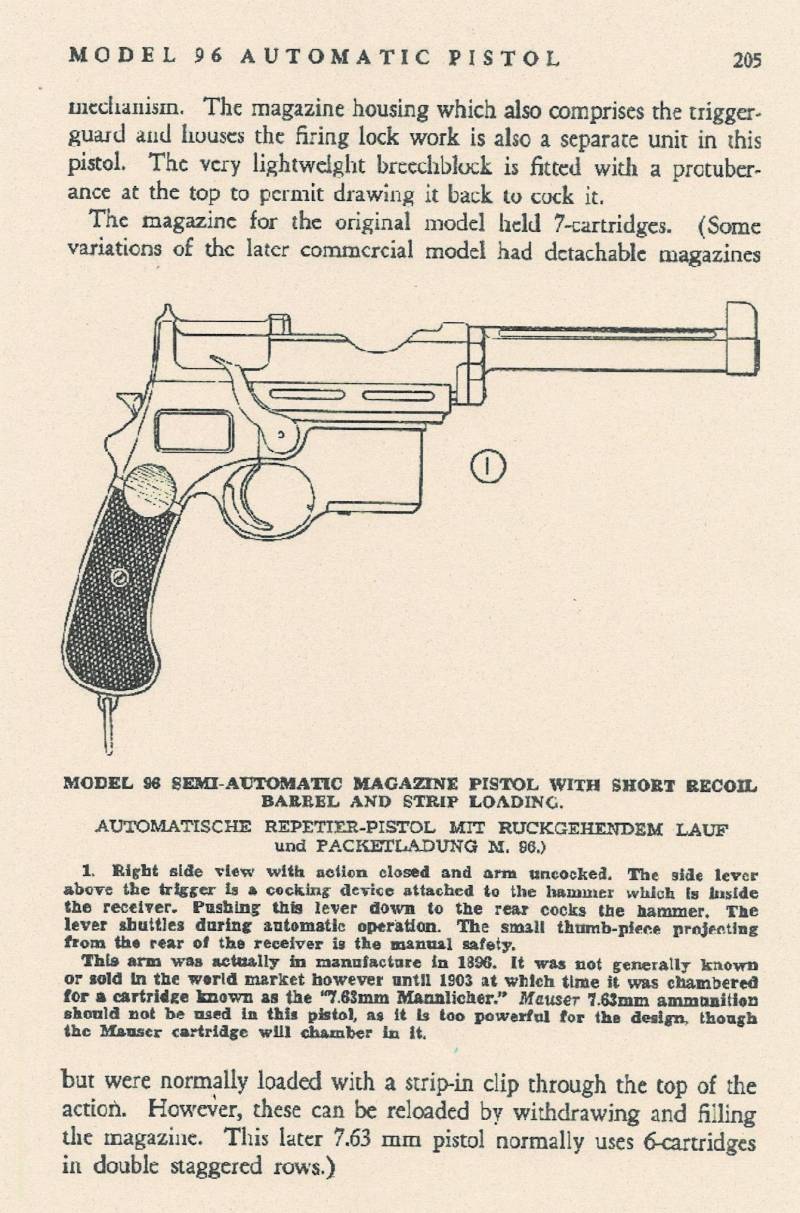
This place on this page is highlighted in bold!
And now we read the most interesting:
There is a hammer in the bolt, which is hit by the trigger, connected to a lever on the right side of the pistol body.
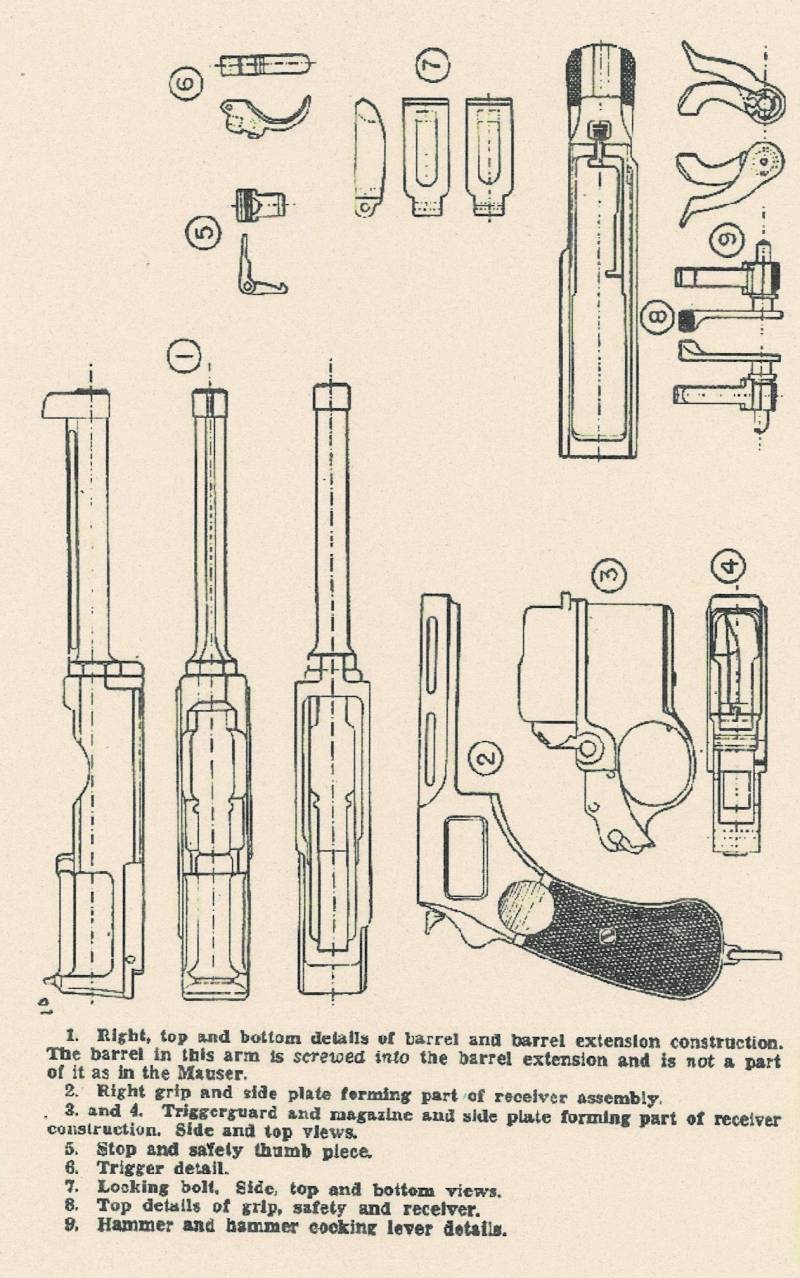
Well, this figure shows everything so clearly that there is no point in explaining it. Lever with trigger - part No. 9
To load, the bolt is pulled back behind the handle located on it with a slot for aiming. The magazine platform is raised by the magazine spring, causing the latch to hold the bolt open. Then the clip with cartridges is inserted into the clip guide, and the cartridges are sent into the magazine by pressing from above. When the clip is pulled out, the bolt is released and moved forward by the compressed recoil spring, moving the top cartridge into the chamber. When the trigger is pulled, the mainspring forces the hammer to strike the firing pin.
Well, then you don’t have to translate or read, except perhaps that the barrel in this pistol is locked by skewing the bolt in the vertical plane.
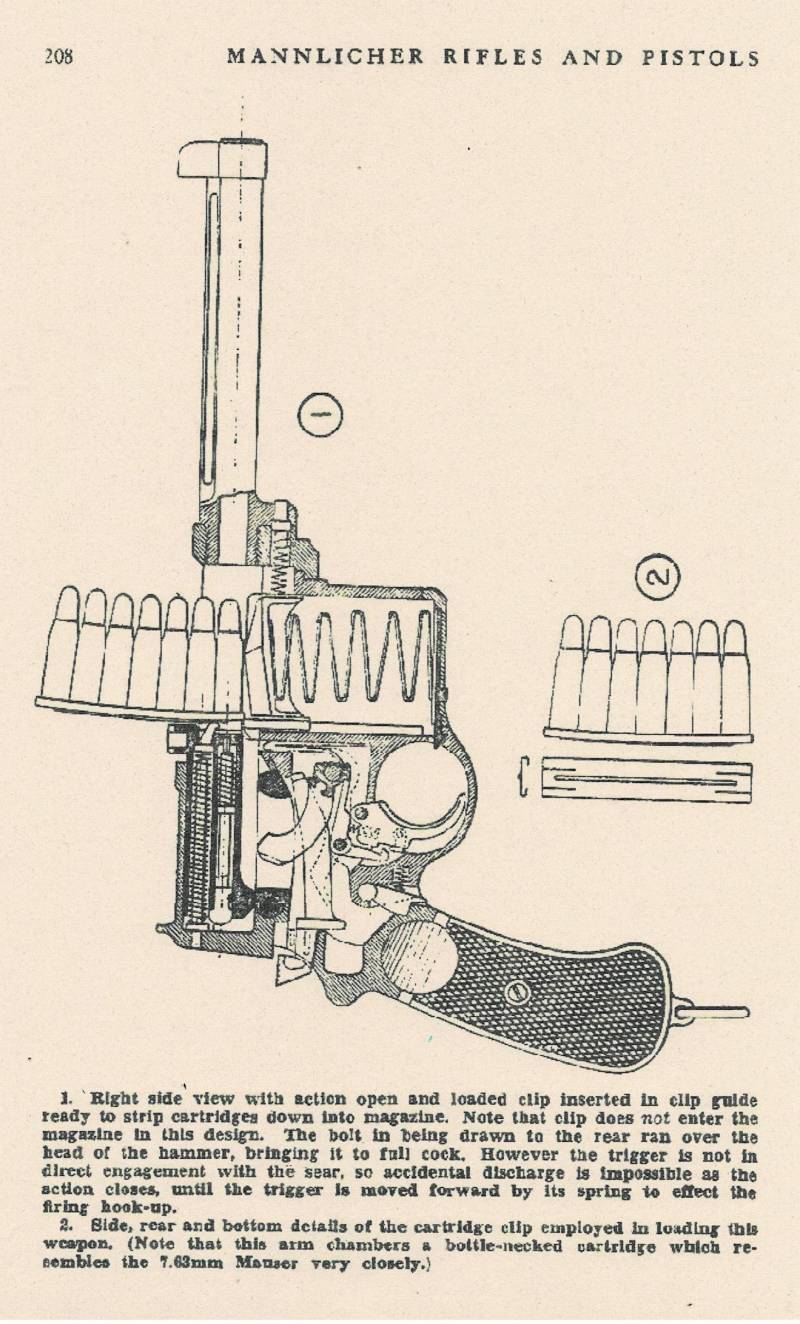
And finally, the last diagram from this book. The lever, the trigger, and even the firing pin on which it needs to be hit are very clearly visible. Well, the design of the magazine and cartridge clip is also well shown...
Well, the main thing that we managed to find out is that this pistol has both a trigger and a lever on the right that controls it. Actually, I wrote about this in the previous article, but I did not have a link to such an impressive source of quality... However, as we have also already found out, it is almost impossible to sort out all sources of information today.
Information